AC Performance In Extreme Heat

Central air conditioning systems are designed to suit the size of your home and the amount of air it needs to cool or heat. The size of the specific AC unit, the condenser, is chosen to be efficient for 98% of the typical high temperatures in your area (climate). So for that 2% extreme, like we are having this summer in Palm Desert and Palm Springs, your AC system may actually be undersized. But this is by design. Otherwise, if you went with a larger system that had no trouble pumping the volumes of cool air needed during these extremely hot days, your system would be quite inefficient 98% of the time. And that’s really, almost all the time – not a good thing.
The larger system costs more to install and it consumes more energy to run, all costing you more money. Because it pumps more air volume it cools the house much faster. You might think this was a good thing but instead it means the system is running through off and on cycles at a much higher rate. The shorter cooling cycles means it is not quite running long enough to be pulling humidity out of your home. Removing humidity is part of how an air conditioner works. The condensing coil condenses water out of the air and the heat exchange process during that activity is what creates the cooler air. Warmer air and moisture is then exited from your home. Dryer air, even when warmer, is more comfortable for the human body as it allows our own biological air conditioner, our sweat, to be more efficient. Not removing sufficient humidity from your home could also lead to mold problems.
These are some of the reasons an over-sized AC system is just an all around bad idea. But you can still make the system you have work for you in these 100+ degree conditions.
Getting More Efficiency Out of Your AC System
To make it easier for your AC system to reliably pump out cool air when it’s over 100 degrees outside you need to give it some help.
In a nutshell it comes down to reducing heat gains in the home. Some of the basics are;
- turn the thermostat up a couple degrees and be happy with 76 to 78 degree temperatures indoors
- close off unused rooms – close doors and vents – don’t cool what you don’t use
- shade your windows on the sunny side of the house
- cook outdoors – enjoy the summer BBQ
- don’t use dry cycle on dishwasher – leave door open and let them air dry
- don’t run clothes dryer during the heat of the day
Anything you can do to keep the house stay cooler, even a little bit, means the AC does not need to be running as long for each cooling cycle.
AC Maintenance is Key!
Your central air system should be getting a maintenance check-up at least once a year. Ideally the AC unit should be checked before peak demand during Palm Desert's summer heat, to ensure it’s running at its best when you need it most. It will be running hard through these multiple 100+ degrees days and may even need a check-up later on after all that heavy use.
Call NexGen HVAC & Plumbing
Our expertise and commitment to customer satisfaction make us the leading HVAC company in Southern California. To learn more about our equipment, services, and protection plan, book an appointment online or call 888-277-0415.
Is Your Landlord Responsible for Your AC?
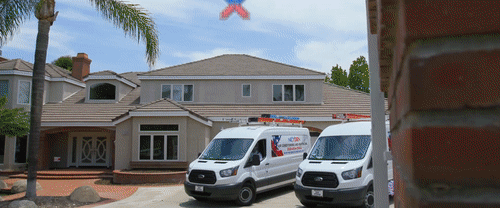
During sweltering summer days air conditioning can seem like it is a necessity. While a good air conditioner can make your rental unit a much more comfortable place to be during the summer is it legally required in California?
Habitability Requirements
Rental houses and apartments in California must comply with habitability requirements. This includes having plumbing, heating, electrical, and gas systems in good working order. A cooling unit isn’t listed as a requirement of habitability, so a landlord does not have to provide one. The rental unit must receive adequate ventilation, however.
Unless a fan or other type of ventilation system is installed in the rental unit, most rooms require a window. The minimum window size usually measures 20 inches by 24 inches and the window must open at least halfway.
Ask About The Cooling System
Even though landlords don’t face a requirement to provide an air conditioner in a rental house or apartment, many landlords provide a cooling unit to increase the desirability of the property. In some areas of California with low humidity, landlords install an evaporative or swamp cooler to meet cooling needs. Tenants should ask about the availability of a working cooling system before they decide to rent the house or apartment.
Who Is Responsible When
If the landlord provided an operable air conditioning system in the rental house or apartment when the tenants moved in, the tenants can expect the landlord to maintain the air conditioning system, keeping it in good working order. If the system stops working through no fault of the tenants, the landlord is responsible for repairing or replacing the air conditioning system. On the other hand, if the tenants caused the failure of the air conditioning system, they pay the cost of AC repair.
A phone call followed by a written statement notifies the landlord of a non-functioning air conditioning system. You then must give the landlord a reasonable period – around 14 days to a month – to make the repairs. If the landlord refuses to fix your broken air conditioning unit, you may consider using the “repair and deduct” remedy. With this remedy, you pay to fix the air conditioner and deduct the cost from the rent. However, the repair cost can’t exceed one month’s rent and you can only use this remedy once a year.
Now while this may not sound like good news exactly it is also not the worst news. If your landlord had an air conditioning system installed and working at the time you moved in it is their responsibility to maintain it. As it is not legally required however it would be in a renter’s best interest to make sure that there is a functioning air conditioning system even when moving in in the winter time.
It is simple enough to check and only takes a few minutes. Have someone with you when looking at the property turn the thermostat to cooling mode and see if the outdoor condensing unit comes on and runs relatively quietly listen for vibration specifically which could indicate a problem. Within a few minutes, cool air should come out of the vents, this would indicate that the air conditioning was in “working order” upon your move-in date.
Call NexGen Today
Our expertise and commitment to customer satisfaction make us the leading HVAC company in Southern California. To learn more about our equipment, services, and protection plan,
book an appointment online or call
888-277-0415.
How cool should my house be if it's over 100 outside?

The summer temperatures in Palm Desert, California are here and it's HOT outside. Many people have received their second or third summer electric bills – and they're literally breaking out in a sweat over the amount due!
When it's about 110 degrees in Palm Desert, Palm Springs, or Indio, California, it's hot enough for anyone and anything. Learn the best way for you to set your thermostat this summer – even if it's not exactly what you want to hear or you prefer a relatively chilly indoor air temperature.
The Case for a Warmer Indoor Air Temperature
Making “the case” for a warmer indoor air temperature during the summer rests on three truisms:
- The longer your air conditioner runs, the higher your electric bill will be.
- The lower you set your thermostat, the longer your air conditioner will run and the higher your electric will be.
- Therefore, the more you can reduce the difference between the outdoor temperature and your indoor temperature, the less your air conditioner will run and the lower your summer air conditioning bills will be.
The California Energy Commission recommends that homeowners set their thermostat to 78 degrees when they're home and 85 degrees when they're away from home during the summer. Note that this is a better strategy than turning off your air conditioner on 100-degree days – so that you don't return home to indoor air that feels like a sauna, and so that your air conditioner won't have to run as long to cool your home upon your return.
The center's advice is based on the U.S. Department of Energy's often repeated mantra about thermostat controls and saving energy: when you can adjust your thermostat by between 10 and 15 degrees for eight hours at a stretch – higher during the summer and lower during the winter – you can save between 5 and 15 percent on your utility bill. This one adjustment can add up to considerable savings, though it might mean sticking with a minimalist wardrobe during the summer (and reaching for a sweater during the winter).
Keep Your Cool
Admittedly, some people simply do not tolerate warm weather well. And some people suffer from health issues that make a cool indoor air temperature an absolute necessity.
Be sure to make allowances for such conditions and take proactive measures to help you stay cool indoors with or without air conditioning -- and even before the temperature soars to three digits outdoors:
- Close your window treatments during the day when the sun is out.
- Turn your ceiling fans in a counterclockwise direction. Doing so will create a literal wind-chill effect that should allow you to set your thermostat about 4 degrees higher than usual -- and you won't feel one bit warmer.
- For the same reason, place table and floor fans in strategic places, such as to cool down the kitchen while you're cooking.
- Make good use of kitchen and bathroom exhaust fans to force heat and humidity to dissipate in a hurry.
- Turn on your whole-house fan in the evening, when temperatures drop outdoors, to bring cooler air into your home and maybe even give your air conditioner a break.
- Drink plenty of water to stay hydrated.
When it's 100 degrees outdoors, you're likely to feel the heat indoors. Ensuring that your home is properly sealed and insulated against air leaks will mitigate your discomfort – and help keep your utility bills in check.
Call NexGen HVAC & Plumbing
Our expertise and commitment to customer satisfaction make us the leading HVAC company in Southern California. To learn more about our equipment, services, and protection plan, book an appointment online or call 888-277-0415.
Should You Install a Furnace or Heat Pump in Your Palm Springs Home?

A furnace only heats the home. A heat can you buy valium in new york without prescription pump heats or cools according to the thermostat setting. Which is the better option? It depends on several factors and in the end only you can decide. But here's what you should know before making a choice.
What's the Difference Between a Heat Pump and a Furnace?
A heat pump is basically an air conditioner with a heating component. Air source heat pumps remove heat from the air and use it to heat your home. Ground source heat pumps remove warmth from the ground and use it to heat your home. The appeal of heat pumps is that they heat with more energy efficiency than oil and gas furnaces because they don’t have create heat; they simply transfer it from one place to another. The result is substantial savings on energy use and utility costs.
Advantages Of Heat Pumps
- Heat pumps do double duty. In summer they keep you cool, and in winter they keep you warm. You don’t have to deal with two separate systems, a furnace, and a central air conditioner. With a heat pump, there’s only one system to install, maintain, repair, or replace.
- Furnaces are powered by limited resources like oil and gas. Heat pumps are a “greener” choice because they use naturally available warmth in the environment.
- If you purchase a heat pump with a zoned system, you can control temperatures in every room of the house. Unlike with a furnace and central air conditioner, you don't have to heat and cool rooms you don't use. Even better, heat pumps with programmable thermostats can be set to kick in only when you're home.
Are Heat Pumps A Better Choice?
Not necessarily. It depends on the climate where you live. In regions like Palm Springs, CA where temperatures are usually above 55 degrees, a heat pump is more efficient. If outdoor temperatures routinely go below 40 degrees, a furnace delivers more energy efficiency because it's better equipped to maintain consistent indoor warmth.
Another consideration is that heat pumps can be more expensive than furnaces, and they may cost more to install. Heat pumps have a shorter lifespan than furnaces because they work year round, whereas furnaces operate only in winter. Finally, heat pumps are powered by electricity, which may cost more than the oil or gas used by a furnace.
Choosing A Contractor To Install Your Furnace Or Heat Pump
Before deciding whether you want a furnace or heat pump, find out how much the unit will cost and what your savings will be over time. Remember that whether you choose a furnace or heat pump, it must be properly sized and professionally installed. An honest and reputable contractor can help you examine the pros and cons in a straightforward way.
Call NexGen Today
Our expertise and commitment to customer satisfaction make us the leading HVAC company in Southern California. To learn more about our equipment, services, and protection plan,
book an appointment online or call
888-277-0415.
HVAC not working? How to troubleshoot HVAC problems
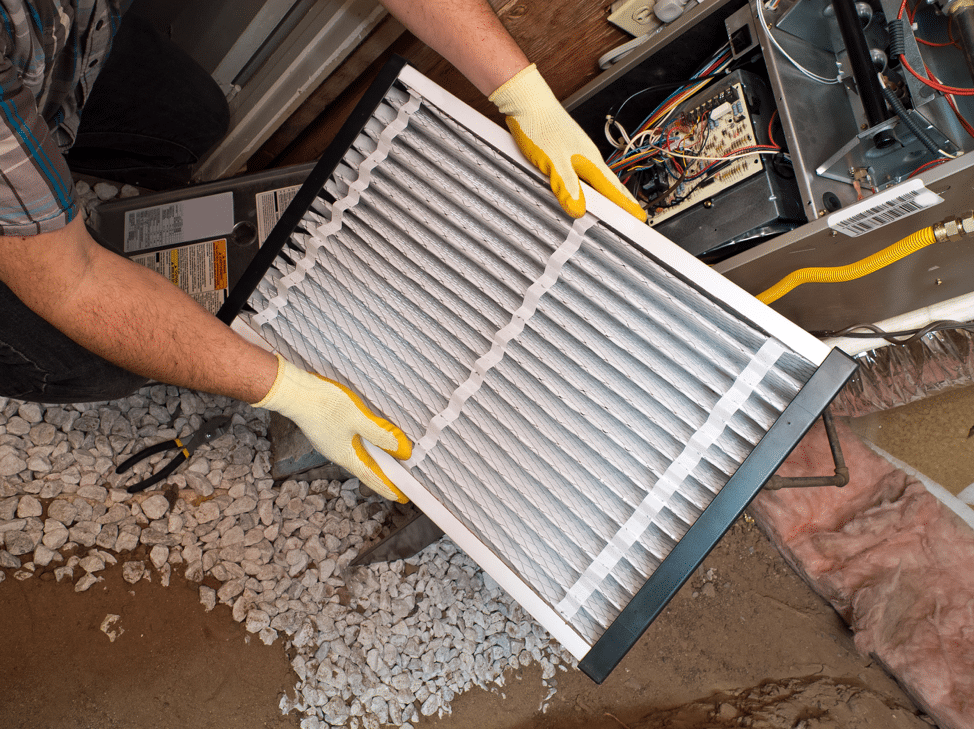
When warm weather hits and the heat is on, the last thing you want is for your air conditioning to be off. It’s essential to maintain steady comfort in your building to keep your residents content. Here are some of the most prevalent problems that you can avoid by following common sense operational procedures and with routine residential air conditioning maintenance.
The AC Won't Turn On
At the top of your list of fears when you initiate your air conditioning troubleshooting review might be that you’ll turn on the system and hear nothing and feel nothing. The lack of power could be something as simple as a blown fuse or a tripped circuit breaker, which means you’ll have to reset the circuit breaker or replace a blown use. It also could be the result of broken or loose wiring or thermostat problems.
Thermostat Glitches
If your thermostat is not working or if it is incorrectly calibrated, it may not tell the air conditioner to turn on. If you have set your thermostat to the lowest temperature setting and the system still does not start, it’s probably time to call your HVAC repair technician, who will likely have to recalibrate or replace the thermostat. The older, dial-type thermostats are more often subject to calibration problems, but sometimes the newer programmable thermostats are not easy to program. When doing air conditioning troubleshooting, you should consult your thermostat manual to make sure you have programmed your thermostat properly.
Air Conditioner Problems Are Not Cool – Low Refrigerant Equals Low Efficiency
While air conditioning troubleshooting uncovers an under-performing unit, that can be the result of low refrigerant. If the refrigerant level is low, it usually means it was either undercharged at installation or it has a leak. If you notice your building is not cooling properly or the air is somewhat sticky, a low refrigerant level could be the culprit. Without the right refrigerant level, heat and humidity cannot efficiently be removed from the air. The refrigerant is the lifeblood of your air conditioning unit and is akin to the motor oil in your vehicle.
Although your AC technician might discover a leak during the air conditioning troubleshooting process, unfortunately it’s not usually a matter of just topping off the refrigerant. When a vehicle frequently needs oil, it’s usually a sign of a bigger problem. Likewise, with an air conditioner system, low refrigerant is often the sign of a leak and you will need a qualified HVAC expert to fix it. If multiple leaks are detected, it’s possible that you may need to replace the unit.
Condenser Problems Will Heat Things Up
When drawing up an air conditioning troubleshooting plan, don’t forget to look at the condenser coil. The condenser has an important job to do. It is responsible for discharging the heat removed from the air by releasing it outside of the building. The condenser coil is part of your outdoor unit, which means it’s exposed to dirt, soot and assorted pollutants that make it grimy. If the coils are dirty, it will interfere with the transfer of heat and make your unit worker harder and add to the wear and tear on your system.
It's Getting Hot In Here – Ironically Could Mean A Frozen Evaporator Coil
While embarking on your air conditioning troubleshooting mission, you should consider that your evaporator coil is the reason for warmer temperatures than you would like. This coil contains refrigerant that absorbs heat. When airflow is diminished, a layer of ice can form on the evaporator coil. If this occurs, you could end up with warm air or no air from your air conditioner supply registers. The restricted airflow could be the result of dirty air filters, low refrigerant or obstructed return air in your ductwork, which brings us to our next problem to look at when you’re conducting your air conditioning troubleshooting project.
Call NexGen Today
Our expertise and commitment to customer satisfaction make us the leading HVAC company in Southern California. To learn more about our equipment, services, and protection plan,
book an appointment online or call
888-277-0415.
HVAC Basic
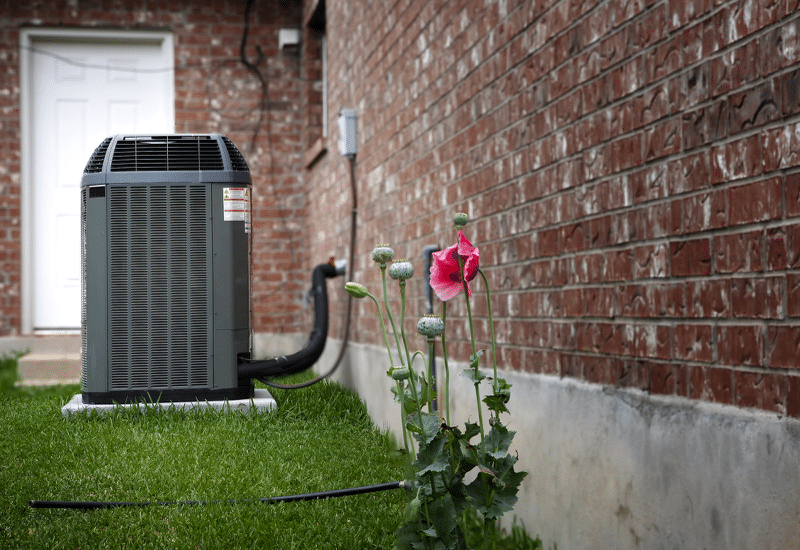
Whether keeping your home cozy in the winter or cooling your office in the summer, HVAC systems are a part of everyday life.
Your HVAC (heating, ventilation, and air conditioning) system is the system or combination of system used to provide a comfortable temperature in your home and maintain high levels of air quality. As a homeowner, it is important to understand the key roles your HVAC system plays and how they operate to get the most out of your system.
Heating
The heating component of your HVAC system provides a warm climate for your home in the cooler months of the year. Today, the most popular type of heating system is the forced air system, but many homes also use radiant heat systems and geothermal heating systems, among others. In all the systems, heat is created at a central source and distributed through the home via different means.
Forced Air
These systems use a furnace to heat the air and then disperse it through the house via ductwork and in-room vents.
Radiant heating systems
These use heating stoves or a boiler to disperse heat through the house via a network of electric heating coils or hot water tubing installed in the floor or ceiling.
Ventilating
Your HVAC system plays a vital role in maintaining your home’s indoor air quality. Ventilation helps circulate and purify air, control moisture levels, remove unwanted smells, and prevent air stagnation.
Depending on the age of your home and the HVAC system you have, this may be done either mechanically, naturally (via fans and windows), or through a combination of the two.
Forced air systems, discussed above, pass the air in your home through an air filter to keep airborne particulates, volatile organic compounds (VOCs), and allergens out of your home. If you do not have a fixed air system, this can also be done using tools like air cleaners, air purifiers, humidifiers, and dehumidifiers.
Understanding how your system keeps your home ventilated is the first step to addressing any breathing or allergy issues you and your family may be encountering throughout the year.
Air Conditioning
Your HVAC system is also in charge of keeping you cool during the warmer months. There are several several types of AC units, each with their own pros and cons. Whether you have central air (used in conjunction with forced air systems), split or ductless AC units, window AC units, or portable AC units, the process that each system uses to cool your home is similar.
Your AC system circulates refrigerant that changes from gas to liquid as it collects and expels heat from your home. It passes warm vapor refrigerant through the compressor where it becomes hot refrigerant vapor and moves to the condenser. Here, the hot vapor is cooled as air from the condenser fan passes over finned coils and turns into hot liquid. The hot liquid passes through the expansion valve that creates a low pressure, cool liquid mist that runs through the evaporator coil.
As the cooler liquid mist evaporates, it absorbs heat from your house’s inside air and returns it to the compressor (restarting the process). This absorbed heat is pushed outside by the system, resulting in a cooler home.
Now that you understand the roles your HVAC system plays in your life, you will be better prepared to maintain your system, learn more about your system, determine what your system is missing, and purchase a new system if the time comes.
Call NexGen Today
Our expertise and commitment to customer satisfaction make us the leading HVAC company in Southern California. To learn more about our equipment, services, and protection plan,
book an appointment online or call
888-277-0415.
3 Desert Air Conditioning Tips

When 110 degree weather is a normal occurance, you know you live in Palm Springs. Sure, that desert heat is great for a day out at the pool, but keeping your home cool can become a nightmare.
Don’t worry:
We’ve created a list of the top 3 desert air conditioning tips you need to know to keep your AC working right, and keep your home cool without breaking the bank.
#1 Change Your Air Filter More Often!
The recommended air filter maintenance you hear about from other sources are for ordinary environments. When you live in Palm Springs, Palm Desert, or anywhere else in the Coachella Valley, you need to adjust your air filter maintenance accordingly. The Coachella Valley is windy, and that hot wind carries a lot of dust.
Think about it:
Your AC is filtering out all that desert dust to keep the air in your home pleasant to breathe, every single day! Tack on 100+ degree weather, and your AC is working really hard to keep you happy! Pay it forward by replacing your air filter more than once per year. In fact, we recommend you change your air filter every season. Extreme desert weather calls for a new air filter at least once every 3 months.
Your AC unit will thank you, and you’ll be much happier knowing your AC is working efficiently. You may want to also invest in a high quality air purifier for even higher quality air in your home!
#2 Make Sure Your AC is Getting Proper Air Flow.
Have you ever felt short of breath?
That’s what your AC is feeling when the outside unit is covered in dirt and debris.
When was the last time you checked your outdoor AC unit?
We’re willing to bet that it’s been a while. Go out back and really inspect your AC condenser (that’s what the outdoor part of your AC is called).
You may be surprised!
If you went ahead and checked your AC right now, you may be surprised as to all the junk you found lodged in the grates.
That’s right!
All that junk is blocking your AC’s air flow which is pretty bad for your AC unit’s lifespan and efficiency. Factor in the extreme desert heat and you’ve got a recipe for a broken air conditioner.
#3 Don’t turn off your AC!
Have you ever heard of the saying, “it’s hard do get a train going, but once it does, it’s hard to stop?”.
That train is your AC unit! It’s much, much easier on your AC unit to maintain a constant temperature throughout the day than to cool the house on and off. In a way, you can call this temperature momentum. Once the house is cooled down to your desired temperature, you home’s AC has a lot of momentum going and it doesn’t have to work as hard. In Palm Springs where inside temperatures can reach over 100 degrees, it can cost a fortune trying to pull the temperature back down to 70 all the time. Set it to 68-78 and keep it there! If you want the most bang for your buck, check out these cool Nest thermostats!
Call NexGen Today
Our expertise and commitment to customer satisfaction make us the leading HVAC company in Southern California. To learn more about our equipment, services, and protection plan,
book an appointment online or call
888-277-0415.
The Best Air Conditioner For Coastal Climates

There are so many benefits to living near the ocean. You enjoy great weather nearly year-round, you get to experience that pleasant ocean breeze, and the sunsets are always gorgeous. However, there’s a disadvantage: corrosion. That same ocean breeze brings salt on the air, which settles on the outdoor portion of your air conditioning unit. Over time, this can quickly ruin your system. Here are some ways to avoid that problem.
Buy a Coastal Region Air Conditioner
The biggest concern for your air conditioning unit when it’s near the ocean is the condenser coil. A condenser coil is usually made of aluminum or copper, with a protective oxide layer. Constant exposure to salt in the air erodes this layer, and then the metal itself, leading to costly air conditioning repairs. Instead, some air conditioning units use condenser coils, and other components, specifically designed for the salty air. They are less likely to erode, meaning your unit lasts much longer. Ask about our coastal air conditioning units today.
Rinse Your Condenser Coils
If you don’t have a coastal weather-specific unit, or if you’re trying to help your current unit last as long as possible before the upgrade, there are a few things you can do. One temporary solution is to rinse your condenser coils. This washes off the salt and prevents the salt from corroding your system. Simply spray down your outdoor unit with a hose each morning. Just be sure to turn off your thermostat so you don’t buy phentermine online trigger the unit to turn on. However, constant spraying can wear down the unit in other ways--you’ll eventually need to replace the unit, but this simple step could add several years to its life.
Get Regular Air Conditioning Maintenance
Though air conditioning maintenance is always a good idea, it’s especially necessary when you live near the coast. A certified HVAC contractor will check components like your condenser coils for erosion, while also inspecting pieces like your air filter. They will also check the unit for necessary cleaning, and keep an eye out for any upcoming issues or repairs. Regular maintenance can mean the difference between a unit that dies on you after a couple of years and a unit that lasts a decade.
Place Your Outdoor Unit Wisely
Lastly, be careful about where you place your outdoor unit. Ideally, it should sit somewhere that doesn’t get directly hit by winds. It should also never be in direct sunlight if you can avoid it, and it’s even better if it’s protected from rain. Though salt will always be present in the air if you live near the coast, blocking the breeze can slow the corrosion process.
A little air conditioner maintenance is a small price to pay to live near the ocean. At NexGen Heating and Air, we’re here to help you find the best product for your situation and to help your current unit perform as well as possible. Contact us today to make sure your air conditioner is ready for that ocean breeze.
Call NexGen Today
Our expertise and commitment to customer satisfaction make us the leading HVAC company in Southern California. To learn more about our equipment, services, and protection plan,
book an appointment online or call
888-277-0415.
Why is My Furnace Leaking Water?
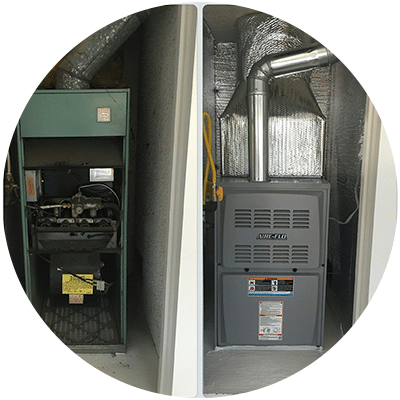
This goes without saying, but you should never see water leaking from your furnace. Ever. This is a solid indicator that something is either dripping, leaking, or not draining properly. Luckily, most of the time this is just a minor problem that can easily be serviced.
Causes of Condensation
While cooling, the evaporator coil and the suction line can create condensation. This is why it is important that these components are properly sealed and insulated. If the insulation on the suction line is missing, it can start leaking. Make sure your coils and suction lines are tight and insulated.
The evaporator produces a lot of condensation during the summer, which eventually makes its way down the coil and into the pan for drainage. Depending on your unit and home setup, the drain funnels outside of the house or into the ground. It can also drain into a condenser pump that will eventually take condensation out to a drainage pipe. If any of the components in this drainage process are dirty, then water can begin to drip onto the floor. This makes yearly cleaning maintenance of your coils extremely important.
No matter where your furnace is installed or what type of furnace you have, it will produce condensation. Furnaces have to drain water in order to work properly, and you or your service technician have to perform yearly maintenance to ensure there's no dirt or blockages in your coils or drainage system.
Be vigilant about your furnace leaking water onto the floor and go through the troubleshooting process of checking your coils and suction line. If there's any water leaking onto the floor, it's usually a simple fix, but if not, please call your local furnace repair technician.
Call NexGen Today
Our expertise and commitment to customer satisfaction make us the leading HVAC company in Southern California. To learn more about our equipment, services, and protection plan,
book an appointment online or call
888-277-0415.
Should I Get a Smart Thermostat? We Say Yes!
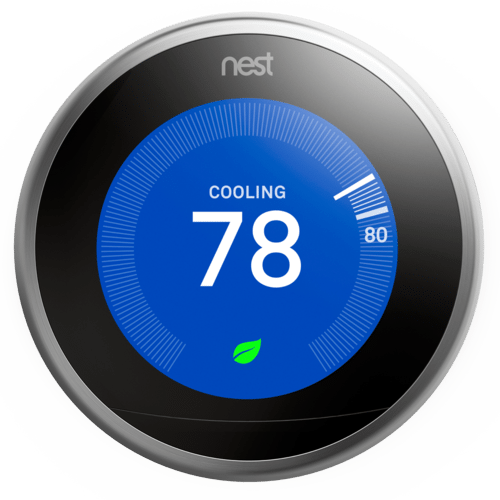
What are smart thermostats for?
A smart thermostat, also known as a wi-fi connected thermostat or IoT thermostat, functions no differently than a traditional programmable thermostat but it's ability to be controlled by your smartphone sets it apart as a superior product. The level of control you'll have with a smart thermostat is well worth the investment.
Can you really save money with a smart thermostat?
Wondering how much money you can save with a smart thermostat? One of our best selling IoT thermostats, the Nest Thermostat, saved the average customer about 10-12% on their electric bills. An average savings of $150 per year means the a smart thermostat can pay for itself in just under two years.
How do you save money by switching to a smart thermostat?
There's no magic here. A smart thermostat monitors, adapts, and adjusts its settings in real-time to best optimize your home's comfort and electrical usage. This maximizes the efficiency of your HVAC system. You'll save money when your smart thermostat slightly adjusts you heating and cooling throughout the day.
How much does it cost to install a smart thermostat?
Smart thermostats are not that expensive to install. Depending on the complexity of your HVAC system, there may be some variability in your installation price, but for the most part it should be a fairly straightforward procedure. A basic installation may cost $99-$250, while a more advanced installation can range from $200-$300.
Can installing a smart thermostat be a DIY job?
For most systems the a Smart thermostat is easy to install on your own. If you have a more complicated HVAC system or if you'd just like some help, you can have a licensed contractor install your thermostat.
Is a programmable thermostat worth it?
Programmable thermostats were created to help you save on heating and cooling costs, which explains why many homeowners invest in them. The efficiency of a smart thermostat comes down to whomever is in control of the thermostat, and whether they are using it correctly or pushing the temperatures to extremes.
Call NexGen Today
Our expertise and commitment to customer satisfaction make us the leading HVAC company in Southern California. To learn more about our equipment, services, and protection plan,
book an appointment online or call
888-277-0415.















